Titanic: A Floating Palace – The Luxurious Appointments & Ill-Fated Grandeur
📌 Discover the opulence of the Titanic, the world’s most luxurious ocean liner, before its tragic end. Explore its grand interiors, including first-class suites, swimming pools, Turkish baths, and the famous Café Parisien. A must-read for historians, students, and maritime enthusiasts.

The Palatial Appointments of the Ocean Liner Titanic, Sunk After Collision with an Iceberg. The Illustrated London News (4 May 1912) p. 651, GGA Image ID # 1014778103
Top Row
- The Captain of the Ill-Fated "Titanic": Captain E. J. Smith (Commander. R.N.R.). Formerly of the "Olympic."
- As in a Great Hotel: The Parisian Café of the "Titanic."
- On the world's Biggest Ship: The Promenade Deck of the "Titanic."
- Keeping Fit Aboard the Floating Palace: Cycling in the Liner's Gymnasium.
Middle Row
- Luxury Aboard the Great Liner: The Cooling - Room of the Vessels Turkish Bath.
- In a Private Ocean-Trip Suite, The Four-Post Bedstead of One of the Two £670 Sets of Apartments.
Bottom Row
- For Those Who Like Exercise in the Water: A Swimming-Bath Aboard the "Titanic."
- The Exercise - Room Aboard the Vessel: The Gymnasium. Showing Various Appliances.
- A Part of One of the Two. £870 Suites: A Private Promenade Deck.
- The Most Important Point Aboard the "Titanic": The Bridge.
Titanic – A Floating Palace Lost to the Sea 🏰🚢
The "Titanic – A Floating Palace" article offers a remarkable glimpse into the Titanic’s unmatched luxury and grandeur, providing a detailed account of its lavish first-class accommodations, recreation spaces, and groundbreaking amenities.
This historical analysis is essential for:
✅ Historians studying Edwardian luxury and maritime advancements
✅ Students & teachers exploring class distinctions aboard Titanic
✅ Genealogists seeking insights into passenger experiences
✅ Maritime enthusiasts fascinated by the Titanic’s engineering & design
📌 Before its tragic sinking, the Titanic symbolized the peak of oceanic luxury—a floating city where the richest travelers in the world enjoyed an experience rivaling the finest hotels. However, despite its unsinkable reputation, flawed safety measures and overconfidence led to its demise.
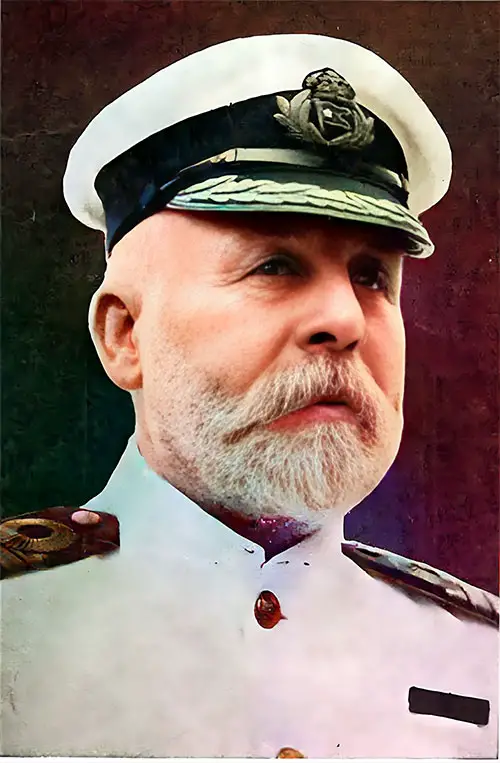
Captain Edward John Smith Who Went Down with His Ship. The Literary Digest (27 April 1912) p. 865. GGA Image ID # 1084643a7b
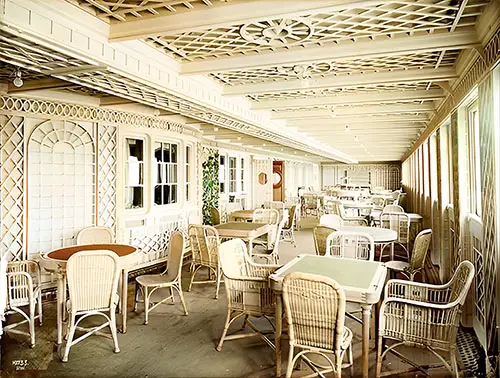
The Titanic's Café Parisien Before Climbing Plants Were Added to Its Trellised Walls. Photo by Robert John Welch (1859-1936), Official photographer for Harland & Wolff. Published 1 March 1912. GGA Image ID # 10ead481d4

The Spacious Promenade Deck of the Ill-Fated Titanic. Photo by Underwood & Underwood, NY. The Independent (2 May 1912). p. 937. GGA Image ID # 10a19e36da
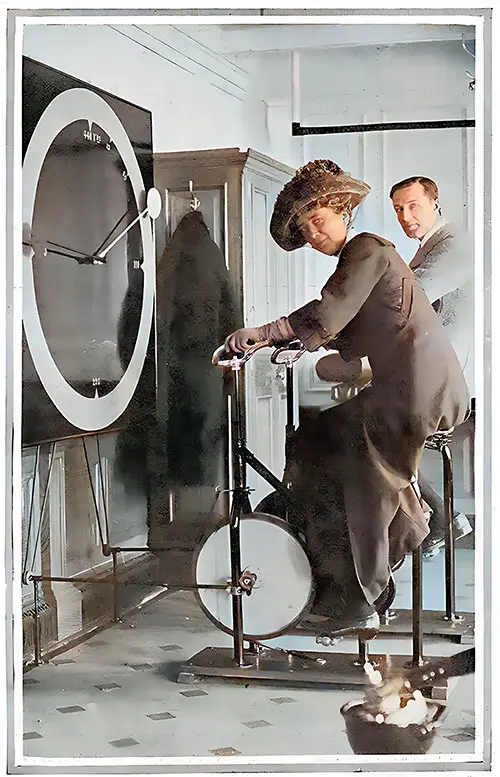
Keeping Fit Aboard the Floating Palace: Cycling in the Liner’s Gymnasium.The Illustrated London News (4 May 1912) p. 651-652, GGA Image ID # 10eb2b4eb2
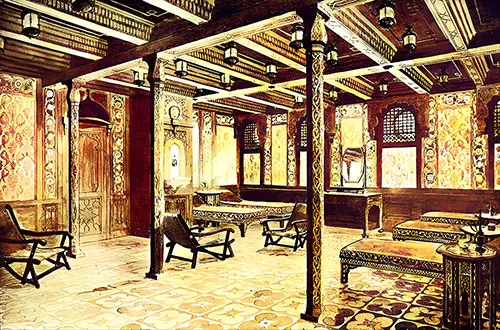
Fig. 87: Cooling Room of the Turkish Baths. The Shipbuilder (Midsummer 1911) p. 82. GGA Image ID # 10c6693d96
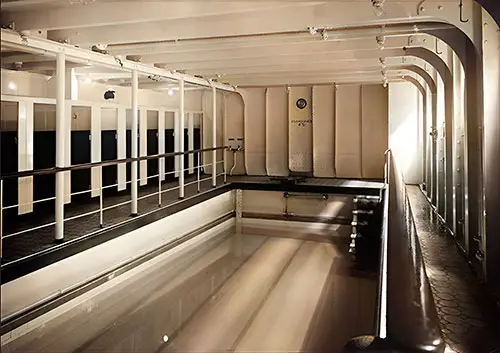
First Class Swimming Pool on the Titanic For Those Who Like Exercise in the Water: A Swimming-Bath Aboard the "Titanic." The Illustrated London News (4 May 1912) p. 651-652, GGA Image ID # 10eb38abb8
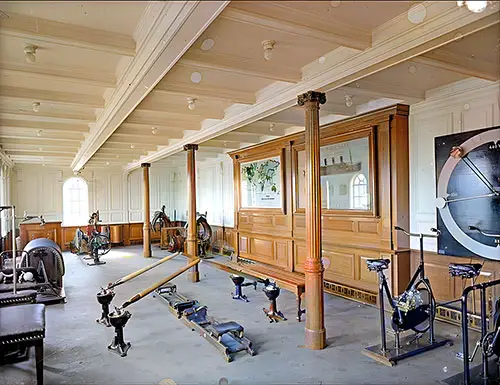
The First Class Gymnasium is Located Just Aft of the Forward Grand Staircase Along the Starboard Side of the Boat Deck. Public Domain Image. GGA Image ID # 10ebeecdca
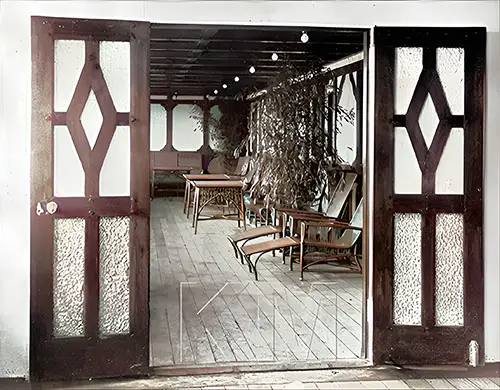
Entrance to a Private Promenade Deck from First Class Parlor Suite - A Part of One of the Two £870 Suites. The Illustrated London News (4 May 1912) p. 651-652, GGA Image ID # 10ebcccd33
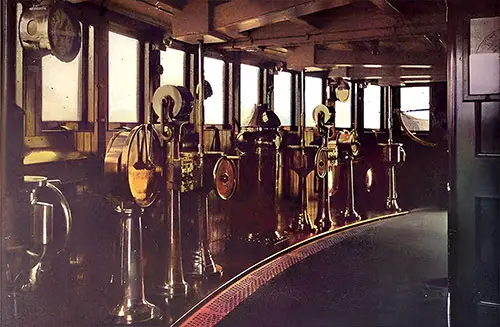
View of the Bridge of an Ocean Liner. The Unsinkable Titanic (1912) p,. 47. GGA Image ID # 1075684a1d
The Titanic was designed to accommodate 3,500 passengers and crew and seat 550 first-class passengers, 400 second-class passengers, and 500 third-class passengers at dinner simultaneously.
She was given an overall length of 882 ft. 6 in., a breadth of 92 ft. 6 in., a height from the bottom of the keel to the top of the captain's house of 105 ft. 7 in., eleven steel decks, and fifteen watertight bulkheads, and it was claimed that she was unsinkable.
Speaking of this to the "Evening News," a representative of Messrs. Harland and Wolff said that all the beams, girders, and stanchions "in the "Titanic's" framework were specially forged and constructed, the deck and shell-plating were of the heaviest caliber, so as to make the hull a monument of strength."
"The Titanic's transverse bulkheads number fifteen. The builders state that any two of these compartments might be flooded without involving the ship's safety. Relative to closing watertight doors, the official description issued by the White Star Line when the Titanic was launched states that these are electrically controlled.
Those allowing communication between the various boiler rooms and engine rooms are arranged on the drop system—Harland and Woltt's special design.
Each door is held in the open position by a friction clutch, which can be instantly released by means of a powerful electric magnet controlled from the captain's bridge. In the event of an accident, the captain can, by simply moving an electric switch, instantly close the doors throughout, practically making the vessel unsinkable.
Precaution floats are provided beneath the floor level. In the event of water accidentally entering any of the compartments, they automatically lift and close the doors opening into that compartment if they have not already been dropped by those in charge of the vessel.
A ladder or escape is provided in each boiler room, engine room, and similar watertight compartments so that closing the doors at any time should not imprison the men. However, the risk of this is lessened by electric bells placed in the vicinity of each door, which rings before their closing and thus gives warning to those below."
The vessel cost at least a million and a half; according to some estimates, it costs nearly a million and three-quarters.
The "Titanic," the biggest liner in the world, could only be described by that most hackneyed of expressions, "floating palace, "for she was designed to be nothing less.
Those who built her gave her, amongst other things, a splendidly equipped gymnasium, swimming baths, Turkish and electric baths, a squash-racquets court, restaurants and cafés, hundreds of radiators, and natural coal fires: suite-rooms of many styles and periods, including Queen Anne, old and modern Dutch, Georgian, Louis XV and Louis XVI; and further, facilities for what have been called "private ocean trips "—i.e.. two suites of rooms, each with a private fifty-foot-long promenade deck, let at £870 for the voyage. In addition, electric lifts may be mentioned.
The cost of the vessel has been estimated at £1,500,000, but it is probable that it was nearer £1,750,000. As noted above, the "Titanic" was 682 ft. 6 in. long, as was the "Olympic."
Her gross tonnage was 46,382 tons; her displacement was 60,000 tons.
Bibliography
"'S.O.S! S.O.S! S.O.S!' The Palatial Appointments of the Liner 'Titanic,' Sunk After Collision With an Iceberg," in The Illustrated London News, New York: The International News Company, Vol. 50, No. 1304, Saturday, 4 May 1912, p. 650-651. Photographs by Central Illustrations Bureau.
🏛️ Unparalleled Luxury: Titanic’s Grand Accommodations & Facilities
The Titanic’s builders designed it not just as a ship but as a floating masterpiece, featuring world-class amenities that set it apart from all other liners of its time.
💎 First-Class Passengers Enjoyed:
- Palatial private suites, some styled in Queen Anne, Georgian, and Louis XV décor
- Private 50-foot promenade decks for the most exclusive guests (£870 per voyage)
- Elegant Parisian cafés and dining saloons rivaling high-end European restaurants
- A grand staircase, lined with intricately carved wood, leading to luxurious decks
🏊 Unmatched Recreational Facilities Included:
- A first-class swimming pool – rare for an ocean liner in 1912
- A full gymnasium equipped with cycling machines and rowing equipment
- A squash court—one of the first ever installed on a ship
- Turkish and electric baths, offering a spa-like experience at sea
💡 Most Engaging Image:
📜 The Titanic’s Café Parisien – A stylish onboard café where first-class passengers dined while overlooking the sea, exuding the charm of a French bistro.
💡 Why It Matters:
📌 This section highlights the extravagance of transatlantic travel before World War I, making it an invaluable study for social historians and students exploring class divisions aboard the Titanic.
🚢 "Unsinkable" Engineering & Titanic’s Fatal Design Flaws
Despite its luxury, Titanic was also promoted as a technological marvel, featuring:
✔️ A double-bottom hull for extra safety
✔️ 15 watertight bulkheads—allegedly making the ship "unsinkable"
✔️ Electrically controlled watertight doors, which could seal compartments
✔️ A wireless telegraph system for communication at sea
⚠️ But here’s what went wrong:
🔹 The bulkheads did not extend high enough, allowing water to spill over between compartments.
🔹 The ship carried only 20 lifeboats—far fewer than needed for all passengers and crew.
🔹 No lifeboat drills were conducted, leaving passengers and crew unprepared for evacuation.
🔹 The steel used in Titanic’s hull was brittle in cold temperatures, leading to catastrophic hull failure when it struck the iceberg.
📜 Most Engaging Image:
🔹 View of the Titanic’s Bridge – The command center of the world’s greatest ocean liner, from which Captain E. J. Smith issued his final orders before the ship sank.
💡 Why It Matters:
📌 This explains why the Titanic, despite its innovations, failed to survive its maiden voyage—a key study for maritime engineers and historians exploring ship safety failures.
🛳️ First, Second, and Third-Class Experiences – A Study in Social Class
While Titanic’s first-class passengers lived in unparalleled opulence, the ship also catered to a diverse mix of travelers, from wealthy elites to working-class immigrants seeking a new life in America.
🌟 First-Class Experience
🛏️ Lavish suites rivaling the world’s best hotels
🍽️ Fine dining experiences curated by elite chefs
🎻 Live music in grand lounges
⚖️ Second-Class Comfort
🚶♂️ Spacious cabins with elegant décor
📖 A private library and smoking room
🍽️ A dedicated second-class dining hall
⚠️ Third-Class Realities
🚢 Basic cabins with bunk beds for multiple passengers
🥣 Communal dining but generous meal portions
🚶♂️ Limited access to upper decks, which impacted survival rates
📜 Most Engaging Image:
🔹 Entrance to a Private Promenade Deck in First-Class – A glimpse into the exclusive lifestyle of Titanic’s wealthiest passengers.
💡 Why It Matters:
📌 This section provides critical insight into how class divisions impacted survival rates, making it essential for historians and genealogists researching Titanic’s passengers.
🚨 The Titanic’s Cost & Its Fate – A Monument to Human Overconfidence
💰 Titanic’s Cost: Estimated between £1,500,000 and £1,750,000—a staggering sum for 1912.
⚠️ But its fate was sealed by overconfidence:
Titanic was designed to carry 3,500 people, yet it only had lifeboats for 1,178.
Despite warnings of icebergs, the ship continued at full speed.
The watertight compartments failed, proving that the ship was never truly "unsinkable".
📜 Most Engaging Image:
🔹 Captain Edward John Smith, Who Went Down with His Ship – A powerful and tragic image of the man who commanded the Titanic, remaining on the bridge until the end.
💡 Why It Matters:
📌 Titanic’s design flaws and operational mistakes led to new maritime laws, making this section essential for students of history, law, and naval safety.
📷 Noteworthy Images & Their Significance
📜 The Titanic’s Café Parisien
A visual of first-class luxury, where passengers dined in high style.
📜 The Grand Promenade Deck
Shows the spacious open-air retreats available to first-class travelers.
📜 The Gymnasium & Turkish Baths
A rare look at how the wealthiest passengers enjoyed leisure time aboard the Titanic.
📜 Captain E. J. Smith’s Portrait
A tribute to the commander who perished with the ship.
📜 The Titanic’s Bridge
A haunting image of where final decisions were made as the ship sank.
Who Should Read This? 🎯
👩🏫 For Teachers & Students
- A powerful lesson on class differences aboard the Titanic.
- A case study in overconfidence in engineering and safety regulations.
📖 For Historians
- A detailed breakdown of Titanic’s luxurious accommodations.
- Insights into the Edwardian era’s travel culture and social hierarchies.
🔎 For Genealogists
- Understand where ancestors may have stayed aboard Titanic.
- Discover how class differences influenced survival chances.
🌊 For Maritime Enthusiasts
- A deep dive into Titanic’s unparalleled luxury and tragic fate.
- A close look at the ship’s innovative yet flawed design.
Final Thoughts: Titanic’s Legacy – A Cautionary Tale of Human Ambition & Hubris ⚓💔
The "Titanic – A Floating Palace" paints a breathtaking yet tragic portrait of a ship that was meant to redefine luxury at sea but instead became a symbol of human overconfidence.
📌 Whether you’re a historian, student, genealogist, or Titanic enthusiast, this article unveils the grandeur and fatal flaws of history’s most famous ocean liner.
If you had been aboard Titanic, which class would you have traveled in? 🚢✨
